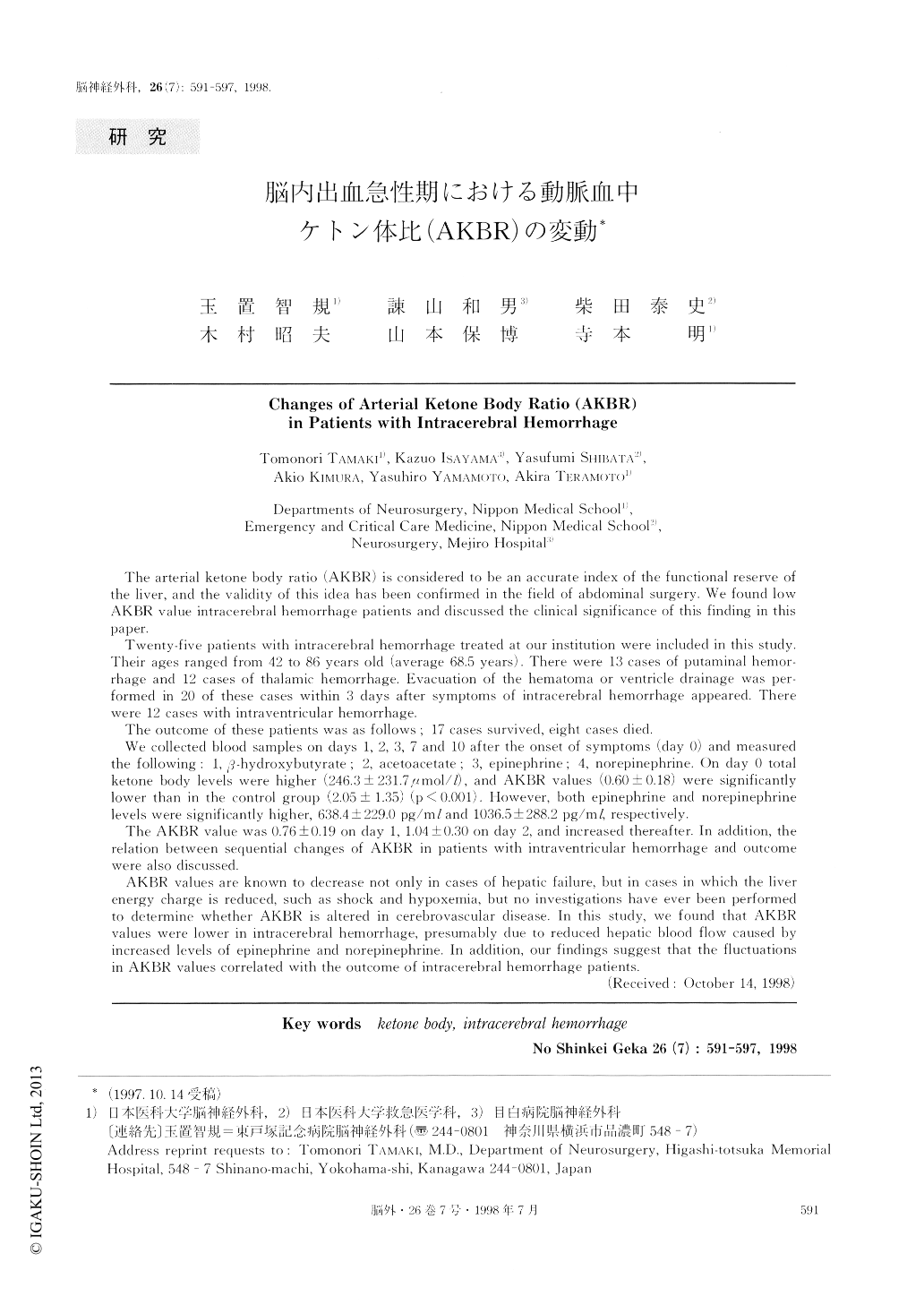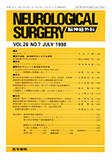Japanese
English
- 有料閲覧
- Abstract 文献概要
- 1ページ目 Look Inside
I.緒言
動脈血ケトン体比(arterial ketone body ratio:AKBR)とはアセト酢酸とβヒドロキシ酪酸の比であり,肝臓におけるミトコンドリアの酸化還元状態(redox state)を鋭敏に反映する指標とされ,その正常値は1.0以上であり,救急医学や腹部外科領域では患者の生命予後を予測する指標とされ重要視されている1).一方,脳血管障害後の肝機能障害としては薬剤性肝障害,輸血後肝炎などがよく知られているが,特異的な肝障害の存在は明らかにされていない1,11).今回われわれは脳内出血(intracerebral hemorrhage:ICH)急性期の症例においてAKBRが低値を示すことを観察したので,その臨床的意義について検討した.
The arterial ketone body ratio (AKBR) is considered to be an accurate index of the functional reserve ofthe liver, and the validity of this idea has been confirmed in the field of abdominal surgery. We found lowAKBR value intracerebral hemorrhage patients and discussed the clinical significance of this finding in thispaper.
Twenty-five patients with intracerebral hemorrhage treated at our institution were included in this study.Their ages ranged from 42 to 86 years old (average 68.5 years). There were 13 cases of putaminal hemor-rhage and 12 cases of thalamic hemorrhage. Evacuation of the hematoma or ventricle drainage was per-formed in 20 of these cases within 3 days after symptoms of intracerebral hemorrhage appeared. Therewere 12 cases with intraventricular hemorrhage.
The outcome of these patients was as follows ; 17 cases survived, eight cases died. We collected blood samples on days 1, 2, 3, 7 and 10 after the onset of symptoms (day 0) and measuredthe following : 1,β-hydroxybutyrate ; 2, acetoacetate ; 3, epinephrine; 4, norepinephrine. On day 0 totalketone body levels were higher (246.3 ± 231.7μmol/l, and AKBR values (0.60 ± 0.18) were significantlylower than in the control group (2.05 ± 1.35) (p < 0.001). However, both epinephrine and norepinephrinelevels were significantly higher, 638.4 ± 229.0 pg/ml and 1036.5±288.2 pg/ml, respectively.
The AKBR value was 0.76 ± 0.19 on day 1, 1.04 ± 0.30 on day 2, and increased thereafter. In addition, therelation between sequential changes of AKBR in patients with intraventricular hemorrhage and outcome were also discussed.
AKBR values are known to decrease not only in cases of hepatic failure, but in cases in which the liverenergy charge is reduced, such as shock and hypoxemia, but no investigations have ever been performedto determine whether AKBR is altered in cerebrovascular disease. In this study, we found that AKBRvalues were lower in intracerebral hemorrhage, presumably clue to reduced hepatic blood flow caused byincreased levels of epinephrine and norepinephrine. In addition, our findings suggest that the fluctuationsin AKBR values correlated with the outcome of intracerebral hemorrhage patients.

Copyright © 1998, Igaku-Shoin Ltd. All rights reserved.


